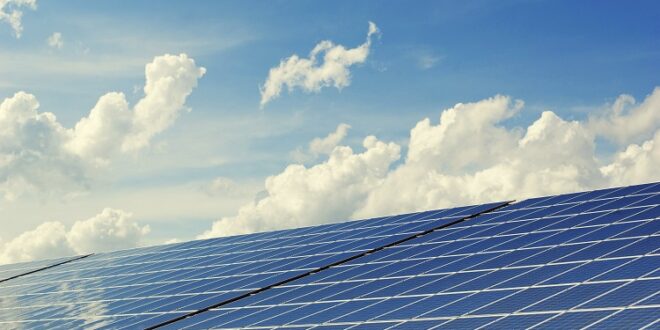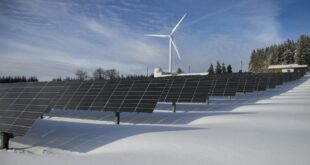The shift towards renewable energy sources has gained momentum recently, with residential solar power systems at the forefront of this transition. Solar energy offers a sustainable alternative to fossil fuels and promises long-term cost savings for homeowners. Nevertheless, the initial solar installation cost can be substantial and is influenced by many factors. Understanding these variables is crucial for homeowners considering solar power as a viable energy option. We will delve into the key factors affecting the residential cost of solar panels in NJ.
Factors that can influence residential solar system costs
1. Geographic Location
One of the primary determinants of solar installation cost is the geographic location of the residence. The sunlight a region receives directly influences a solar power system’s efficiency and required capacity. In sunnier climates, fewer solar panels are needed to generate the same amount of electricity compared to areas with less sunlight, potentially reducing the overall cost. Additionally, local weather conditions and seasonal variations can impact the efficiency of solar panels. In regions with frequent cloud cover or higher latitudes, more panels or higher efficiency may be demanded to achieve the desired energy output, increasing the initial investment.
2. Type and Quality of Solar Panels
The market offers a variety of solar panels, each with different efficiency ratings, longevity, and prices. Typically, higher-efficiency panels are more expensive but can generate more electricity in a given space than lower-efficiency alternatives. This factor is crucial in urban areas where roof space might be limited. Homeowners must balance cost with efficiency to find a suitable solution. Moreover, the quality and durability of panels also play a role. Premium panels with a longer lifespan and better warranties might cost more upfront but can offer savings in the long term due to fewer replacements and consistent performance.
3. Installation Complexity
The complexity of installing a residential solar system significantly affects its cost. Complex roofs, such as those with multiple levels, skylights, or steep angles, require more labor and time to install solar panels, increasing the installation costs. Additionally, the condition of the roof can play a role. A roof needing repair or reinforcement before installation can add to the overall expense. The cost also varies depending on whether the system is grid-tied, off-grid, or a hybrid. Off-grid systems, for instance, require additional components like batteries and backup generators, adding to the cost.
4. Scale and Customization
The size of the solar power system, determined by the household’s energy needs, directly impacts the cost. Larger systems with more panels and inverter capacity will naturally be more expensive. However, economies of scale can sometimes reduce the cost per watt as system size increases. Customization for specific energy needs or aesthetic preferences can also affect pricing. Tailored solutions, such as integrating solar tiles instead of panels or configuring systems to optimize for particular usage patterns, usually come with a higher price tag due to the additional planning and specialized equipment required.
6. Government Policies and Incentives
Government policies and incentives play a pivotal role in the affordability of residential solar systems. Many regions propose tax credits, rebates, or subsidies to offset the initial solar installation cost, making it more accessible to homeowners. These incentives can significantly reduce the net cost of a solar power system. Nevertheless, these policies vary widely by location and can change over time, influencing the overall affordability of solar installation in a given area. Further, some governments have net metering policies, allowing homeowners to sell excess electricity back to the grid, influencing the economic feasibility of solar energy.
7. Labor and Installation Service Costs
The cost of labor and installation services is a considerable component of the overall expense. This cost is influenced by the local labor market and the expertise required for the installation. Certified and experienced installers typically charge more but offer higher quality work and adherence to safety standards. As mentioned earlier, the installation’s complexity also affects labor costs. Installations in remote or difficult-to-access locations may incur additional charges.
8. Maintenance and Operational Costs
While often overlooked, the maintenance and operational costs of solar power systems are paramount factors in the long-term economics of solar energy. High-quality systems with robust warranties may have lower maintenance costs over their lifetime. The need for occasional cleaning, potential repairs, and inverter replacements contribute to the general cost of owning a solar power system. These factors can vary based on the system’s quality, local environmental conditions, and the effectiveness of the initial installation.
Various factors, including geographic location, type and quality of solar panels, installation complexity, system scale and customization, government policies, labor costs, and maintenance requirements, influence the cost of residential solar systems. Homeowners considering solar energy must carefully evaluate these factors to understand the initial and long-term financial implications. While the upfront cost can be significant, the long-term benefits, both financial and environmental, make solar power a compelling choice for residential energy needs. As technology advances and more incentives become available, solar energy will likely become an increasingly accessible and popular choice for homeowners seeking sustainable, cost-effective energy solutions.
 HammBurg Be informed with latest news, reviews, entertainment, lifestyle tips, and much more.
HammBurg Be informed with latest news, reviews, entertainment, lifestyle tips, and much more.




